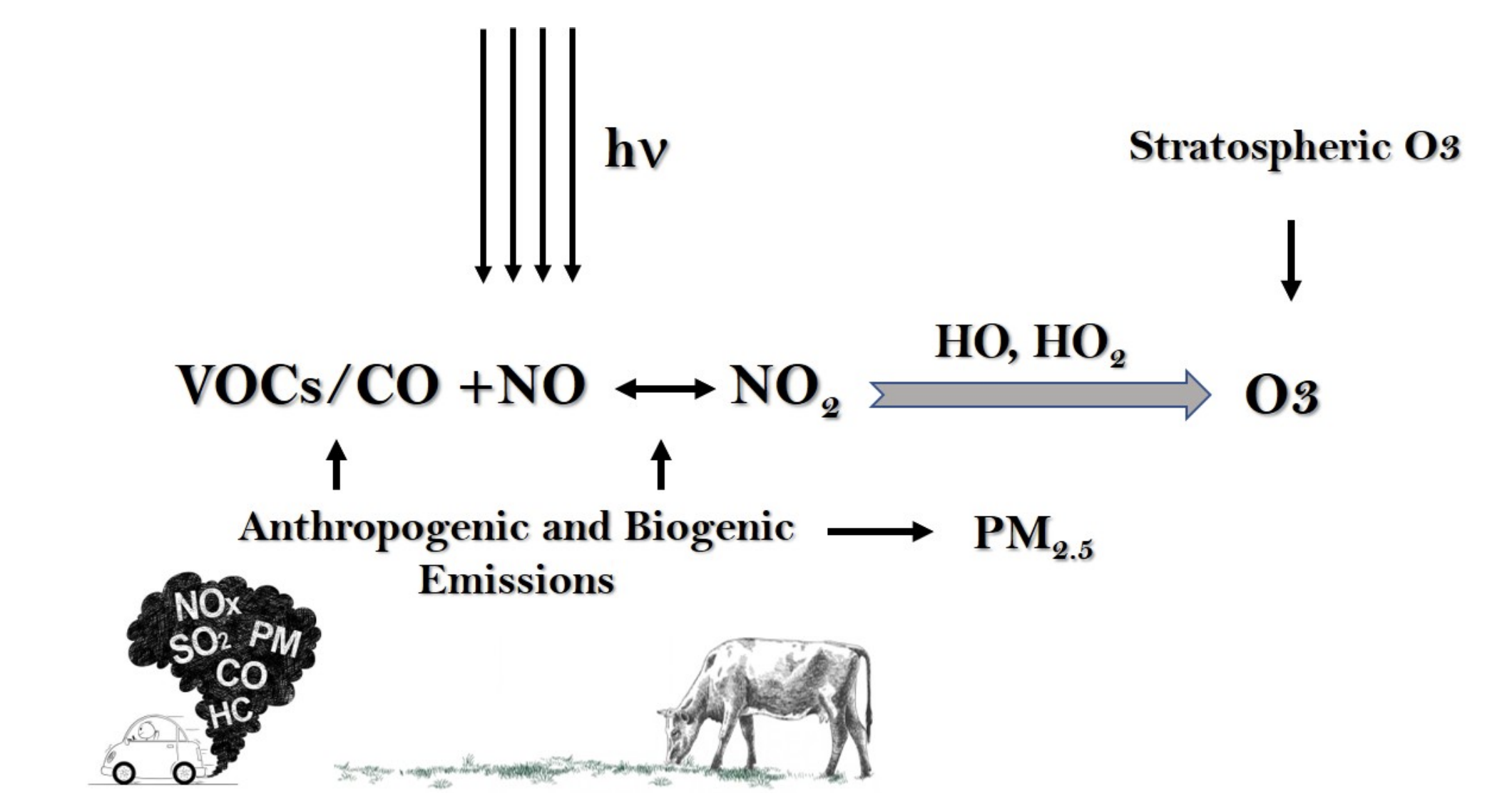Find it online: https://jpoll.ut.ac.ir/article_100998.html
This work investigated the connection between O3 and other pollutants and meteorological conditions during a smog episode in Delhi. Ozone concentrations varied from site to site (150~269µg/m3). A significant negative correlation has been observed between O3 and its precursor gases. Wind speed showed a positive correlation, but high wind usually dilutes the pollutant concentrations. Thus, a positive correlation with wind speed represents ozone transport from other locations to observational sites. The high ratio of PM2.5 to PM10 indicates a predominance of human involvement. Toluene and benzene ratios(T/B) are estimated to understand the nature of emission sources and the lifetime of pollution. The analysis of the benzene and toluene fractions indicates anthropogenic air masses’ dominance. Very high T/B values at several sites indicated that benzene was emitted from vehicular emission while toluene was from point sources. Ozone formation potential analysis showed that toluene and p-xylene are the prime contributors to ozone.
CITE IT: N., Tewari, A., & Das, A. (2025). Associations of Trace Gases and Meteorological Parameters and Particulate Matter with Ozone under Smog Conditions. Pollution, 11(3), 758-780. https://doi.org/10.22059/poll.2025.383221.2585

Leave a Reply